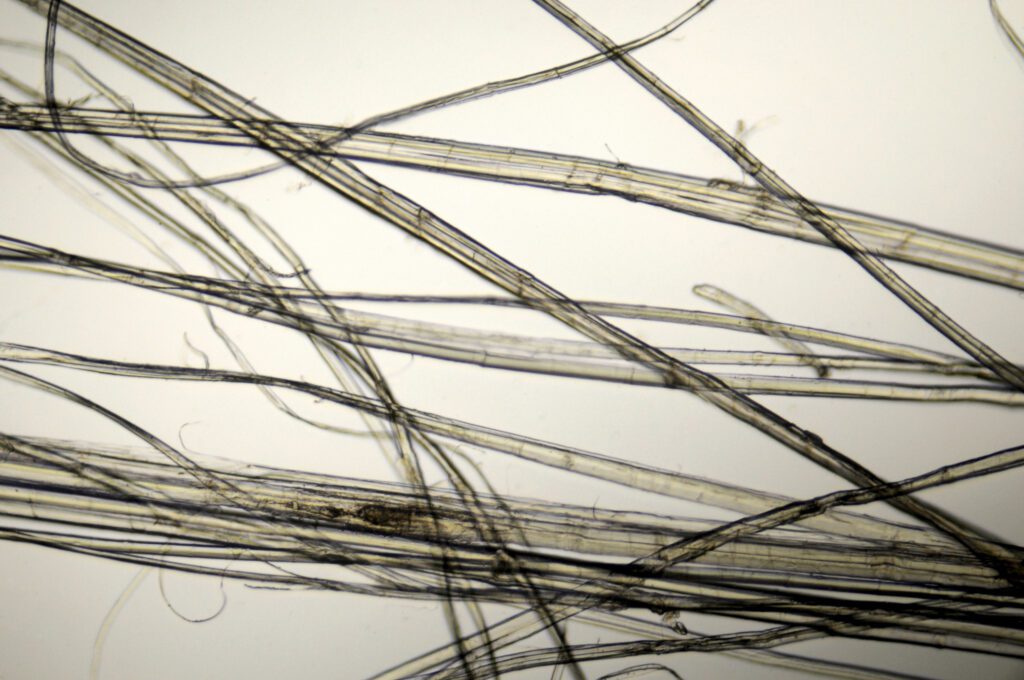TEXTILE EXCHANGE ON SMART MATERIAL CHOICES


The material mix is one of the biggest drivers of a fashion brand’s environmental footprint and comes with implications for climate change, waste and biodiversity. Across segments, it can determine up to two thirds of a brand’s impact on water, energy and land use, as well as its air emissions and waste.1 However, deciphering the environmental, social and ethical impact of raw materials remains a complex undertaking due to a general lack of common data on the socio-environmental impact across all fibre types. When choosing a material, it must be assessed holistically by bearing in mind the social implications, intended use and end of use of a product. Supporting the industry in this decision-making process, Textile Exchange, works with fashion brands and retailers to measure, manage, and integrate preferred fibres and materials into mainstream business operations through their Corporate Fiber & Materials Benchmark.
TEXTILE EXCHANGE
Textile Exchange is a non-profit organisation that envisions an enriching global textile industry that protects people and planet by positively impacting climate, soil health, water, and biodiversity.
Through their work, Textile Exchange aims to inspire and equip the industry to accelerate the adoption of preferred materials across the textile supply network through accessible and actionable guidance. They develop, manage, and promote a suite of leading industry standards, as well as collect and publish critical industry data and insights that enable brands and retailers to measure, manage and track their use of preferred fiber and materials.
By 2030, Textile Example aims to achieve a 45% reduction in greenhouse gas emissions within fiber and raw material production.
DRIVING INDUSTRY ADOPTION OF PREFERRED MATERIALS ACROSS THE FASHION SUPPLY CHAIN
Millions of people – fibre farmers, foresters, waste collectors, polymer engineers, other textile feedstock providers and their communities – form the base of the textile supply network and are impacted by the decisions brands and retailers make every day. Influencing improvements in fibre and material production is one of the greatest contributions textile companies can make to ensure future prosperity for the people and the environment connected to fashion’s supply chain.
To support the industry’s progress towards more sustainable material sourcing, align with global efforts and transition to a circular economy, Textile Exchange launched its Corporate Fibre & Materials Benchmark (CFMB) programme. Through the CFMB programme, companies demonstrate a commitment to transparency and continuous improvement around their materials sourcing strategy. The programme’s framework follows a systematic approach to integrating preferred fibres and materials into participating companies’ business strategies. It covers areas of commitment and target setting, tracking progress, measuring impact and transitioning to more circular materials. So far, over 190 companies (including subsidiaries) voluntarily participated in this year’s programme, including iconic fashion, home and sports brands such as: C&A, Tchibo, Nike, Patagonia, H&M, Gap, Gucci, Ikea, Target, New Balance, Adidas and Burberry; making it the largest peer-to-peer comparison initiative in the textile industry. A key component of the CFMB programme – the Material Change Index (MCI) which was first launched in 2019 – tracks industry progress towards preferred material uptake across various material categories. MCI has already achieved a score increase average of 17% with uptake of preferred materials now accounting for 44% of the Index portfolio.
To be eligible for the CFMB programme you must be a brand, retailer, or supplier of textile products. To start your benchmarking journey, register to the CFMB Portal.
CALL TO ACTION
Although recent years have seen encouraging developments in the use of more preferred fibre & materials, with global fibre production expected to reach 146 million tonnes in 2030, it is imperative that the uptake accelerates to stand a hope of remaining on a 1.5-degree pathway.2
At Global Fashion Agenda, we call on fashion industry leaders to trace and evaluate the environmental and social impact of the materials they use and to shift their material mix towards low-impact materials through the support of common industry tools, such as the CFMB and the Preferred Fibre & Materials Matrix (launching soon).3
To learn more about how you can make smarter material choices in your supply chain read our Fashion CEO Agenda – Smart Material Choices.
REFERENCES
1 Global Fashion Agenda. Fashion CEO Agenda. 2021.
2. Textile Exchange. Preferred Fiber & Materials – Market Report. 2021
3. Global Fashion Agenda. Fashion CEO Agenda. 2021.